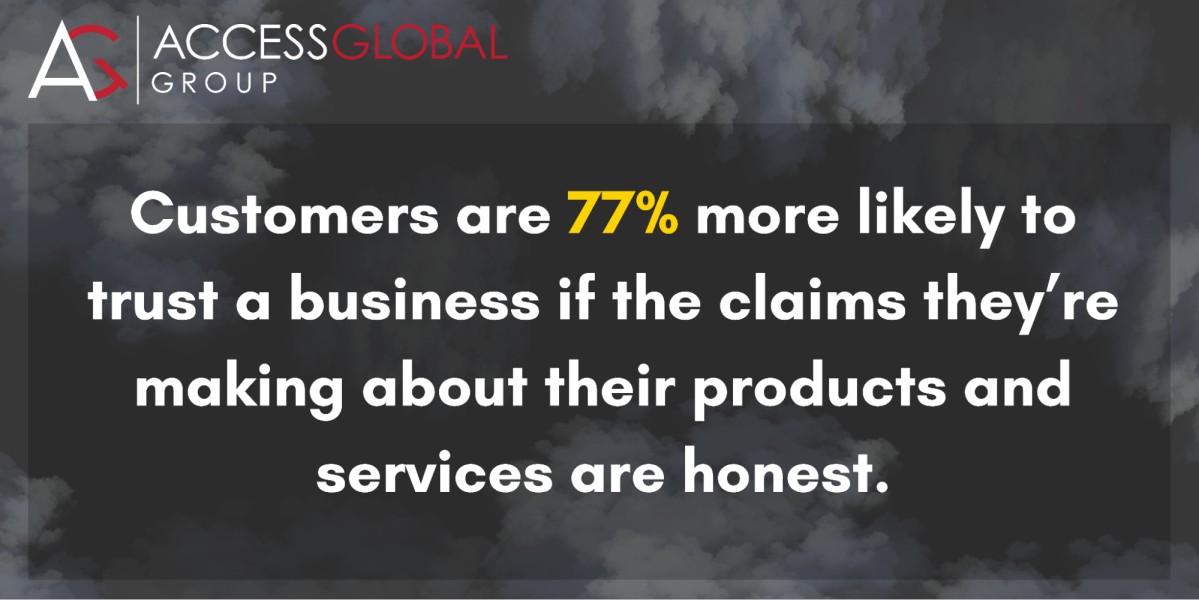Financial Institution Forecasts for 2023
 Jenna Trott
Jenna Trott
5 min read | SEPTEMBER 10, 2022

For the last two years, the world has been a place of immense uncertainty, between a global pandemic and undergoing rapid business transformations – we’ve overcome a lot. But as 2023 draws nearer, the thoughts on everyone’s minds are that of the current state of the economy and workforce. In particular how recession, inflation, supply chain shortages and what’s being dubbed as “The Great Resignation” can pose serious challenges for companies everywhere. Yet, despite it all companies have shown incredible resiliency, with recent studies forecasting that the financial services industry will reach $190 billion by 2026, growing at a compound annual growth rate of 13.7%. So fear not financial service professionals, all is not lost! Here are key trends to be on the lookout for in 2023, so you can not only stay ahead of the curve, but future-proof your business as well.

Customer Trends
We can’t ignore the ways that a global pandemic completely dismantled everything we knew about business processes and customer expectations. And currently? There’s a substantial gap in the way products and services are delivered versus what clients want. A survey conducted in 2020 revealed that 75% of companies think they’re fulfilling their customer’s needs, when in reality only 30% of those customers actually agree. For an industry like financial services, which is heavily reliant on client satisfaction, it is that much more important to pay attention to evolving customer trends. Here’s what we can expect to see in 2023:
Ease
Looking at the digitally immersed world we currently live in, the concept: “ease of access,” is certainly not new. These days, we can control every aspect of our homes from lighting, to temperature right from our phones, go grocery shopping from an app, and work without ever leaving our homes. As digital transformation continues to accelerate, one of the biggest trends we’ll see moving forward is an increased pressure for customer adoption of self-service tools.
The Benefits of Self Service Tools
One of the greatest aspects of self-service is its immediacy for problem resolutions. A recent study reveals that 90% of customers value an “immediate” response as important or very important to them when dealing with a business. What constitutes “immediate?” The majority of customers define that as 10 minutes or less. Self-service enables your customer to be in complete control of their financial services experience and obtain solutions to their problems in a timely manner. Here are self-service tools you need to implement in 2023, if you haven’t already:
- Establish a “Help Center” with step-by-step resolutions to commonly asked questions such as: how to send a wire transfer, how to add a beneficiary, how to submit a loan request, etc.
- Offer an online-chat service to further expedite conflict resolutions
- Create a support page and position it on your website front and center! This shouldn’t be something that’s difficult for clients to find.
- Help customers help themselves and others with personalized communities via Salesforce Service Cloud.
Transparency
The secret to keeping your clients happy? Building trust…and how do you build trust? Through transparency!
Did you know that customers are 77% more likely to trust a business if the claims they’re making about their products and services are honest? This is a statistic that will be likely to increase in 2023, particularly after recent economic concerns surrounding inflation, which in America, is presently a problem more concerning than personal health and wellness. So, how can companies become more transparent in 2023? Make sure that your business:
- Addresses data privacy concerns with an easily accessible (and digestible!) privacy policy
- Offers a way to decline cookies
- Addresses any and all breaches of personal information privacy
- Takes frequent measures to adapt account security

Efficiency
Similarly to ease of access, efficiency is by no means a new industry concept…however, it is becoming the industry standard. Clients want to accomplish tasks simply and quickly, without having to rely on multi-user, multi-step processes. This places heavy demands on businesses to simplify client experiences without decreasing service quality. So how can financial institutions utilize digital adoption without compromising value? Considering implementing these tools to increase efficiency if you haven’t already:
- Interactive product recommendations
- Account comparison visualizations
- Real-time loan rate visualizations
- Credit card comparison tool
- Financial calculator
- Mortgage calculator
- Home affordability calculator
- Renting vs. buying calculator
- Savings & retirement calculator
- Debt payoff calculator
- Loan calculator (auto, equipment, home repair, etc.)
Seamless Journey
Easy, efficient, fast…are you noticing a trend here? Client expectations are rapidly evolving in such a way that reflects their desires for things to get done quickly and with little effort. Which is why seamless customer journeys are something you’re going to see a lot more of in 2023. To date, 85% of customers expect consistent interactions across departments, yet 60% of customers say it generally feels like they’re communicating with separate departments, rather than one company. The notion of seamless customer journeys is something that Salesforce focuses heavily on. Earlier this year, Salesforce sat down with a number of business executives to discuss how to redesign customer experiences to be more connected in a post-pandemic world, and the overall consensus is that customer-centricity is key. This means that the customer is at the center of every single step throughout their journey with your company. Salesforce suggests that this can be achieved by:
- Integrating back-end and front-end platforms to avoid data silos
- Provide consistent support across multiple channels and messaging apps (like SMS, WhatsApp, FB Messenger, Chat, etc.)
- Transcribe customer conversations so agents can focus on help, not notes
- Track conversation transcripts in CRM records for easy reference
- Create a single-source of truth for client data (think products like: Customer 360)
Personalization
In the past, personalization attempts have missed the mark big time. It’s more than likely that you yourself have experienced faulty personalization efforts, like receiving an email to consider a product or service that you already purchased. This isn’t to say that customers don’t want personalization, in fact 56% of customers expect offers to always be personalized. In 2023, it’s more than likely that we’ll see a refinement in the ways that client experiences are personalized with an anticipated growth in personalization tool spend increasing to $2.2 billion by the end of 2026. Here are some ways you integrate personalization within your financial institution today:
- Tailor experiences across multiple marketing channels in real time
- Be sure to communicate time sensitive information to customers
- Alert clients to alternative financial products and services that align with their goals
- Verify that the data you’re collecting is not only clean but accurate as well
AGG PRO-TIP: Consider these tools for Personalization
Technology Trends
Digital transformation, digital innovation, digital adoption – whatever you want to call it, the concept of creating a digital-first experience is at the forefront of everyone’s minds. There are…so many ways to go about achieving digital transformation and reaching true “digital to the core” status can be incredibly overwhelming. So, let’s start small – here are five tech trends to keep an eye out for in 2023 that will help to maximize success for financial institutions.
Cloud Migration
Cloud tech and innovations have been around for a long time, seriously, it’s been around since the 1960s! But even with all its advancements – financial services leaders are still among the minority of those taking advantage of cloud tech. In a recent study conducted by McKinsey, only 13% of financial leaders had half or more of their IT footprint in the cloud. However, this same study showed that the migration to the cloud is gaining rapid momentum with more than half of survey participants saying they expect to shift at least half of their workloads to the public cloud over the next five years.
Top Cloud Solutions for Financial Institutions
Blockchain Technology
If you’re unfamiliar with what exactly blockchain is – you’re not alone. Check out this article from IBM that gives an in depth look at its specifics. In simple words however, blockchain is a shared, immutable ledger that facilitates the process of recording transactions and tracking assets in a business network (source). An asset can be tangible, like a house, car, cash, land, etc., or intangible things like intellectual property, patents, copyrights, or branding (source). Earlier this year, Salesforce staked their claim in the blockchain industry with the announcement of NFT Cloud, marking a future strategy in Web3 for the CRM experts. But what does any of this have to do with financial institutions? A lot! Mainstream adoption of blockchain technology has important implications for the future of digital assets including:
- New payment channels & types
- Diversifying investments/portfolios
- Enabling intercompany or bank transactions
- Custody of digital assets
- Automation of contracts/IP rights
- Tokenization of assets
- Access to decentralized finance platforms
- Enabling end-user transactions
source.

Artificial Intelligence
Artificial intelligence is no longer the future – it’s our present, and its presence within the financial industry is only going to increase in 2023. Before getting into the benefits that artificial intelligence provides for financial institutions, let’s first clarify what we mean by AI. Many people hear “AI” and immediately think of bad chatbots that create more frustrations than they solve. But artificial intelligence has become incredibly diverse and has the capabilities to eliminate the mundane by doing it for you, and provide actionable insights for better decision making. Here are ways financial institutions benefit by utilizing the power of AI:
- Loan risk predictions and assessments
- Improve loan underwriting
- Reduce time consuming repetitive work processes
- Enable faster fraud detection
- Supports 24/7 customer service
- Offers 24/7 access to 24/7 access to personal financial accounts and advice services.
- Saves substantial costs resulting from human errors
source.
Digital-Only Banks
This next tech innovation applies directly to the banking industry within finserv. Digital-only banking is looming on the horizon and people have begun to take notice – and for good reason, they have a lot going for them. You can finally bid farewell to ever stepping foot into a traditional brick and mortar bank. As we’ve addressed earlier in this report, the current customer trends for 2023 include making things easier, faster, and more efficient which are all things digital-only banks solve: no long lines, no arranging your day to travel to and from the bank, no more hours worth of lengthy paperwork completion. According to research conducted by CACI, between 2017 and 2022 mobile transactions rose 121%. Further, with Gen-Z reaching an age where financial independence is becoming a priority in their life, their preferences are that of mobile centricity where they prioritize 24/7 customer service, advice and convenience. This has huge implications for banks everywhere, where unless they’re planning to go fully digital – they need to consider ways to cater to a younger generation and integrate more mobile-friendly solutions.

Big Data
Volume. Variety. Velocity. Big data is large amounts of data that can be incredibly hard to manage. They can be both structured and unstructured but regardless, they inundate businesses on the daily. The idea here is that companies will be collecting increasingly large data sets as a way to better understand and serve people, companies and organizations. Again, this has pretty big implications for the financial sector, particularly in regards to how big data can help serve their clients. When a financial institution has a more comprehensive understanding of their client based upon accurate data, they can:
- Assist clients in better managing their personal finances (ex: using data to set monthly budgets or recommend less risky investments)
- Prevent data theft by analyzing potential vulnerabilities
- Analyze data to aid in cost control from certain financial activities

What Does This Mean for YOU
In order to be successful professionals within the financial services industry, one must not only consider the current market trends but also ways to adapt for the future. In 2023, we can continue to see significant changes in client expectations including: ease of access, business transparency, efficiency, seamless customer journeys and hyper-personalizations. But that’s not all. Significant technological changes are on the horizon as well, including: a substantial increase in cloud migration, mainstream adoption of blockchain technology, artificial intelligence, digital-only banks and big data. So – what’re you waiting for? Start future-proofing your financial institution today.
Get the latest Salesforce news
Subscribe to get the latest Salesforce blogs, guides, industry reports, events, and all things Salesforce related!
FREE Salesforce Assessment!
To demonstrate confidence in our ability as Salesforce Partners, we’re offering you the a FREE Salesforce Organizational Assessment.
Schedule Today!
Salesforce
PLATINUM
PARTNER
Salesforce
APPEXCHANGE
G2
USER REVIEWS







